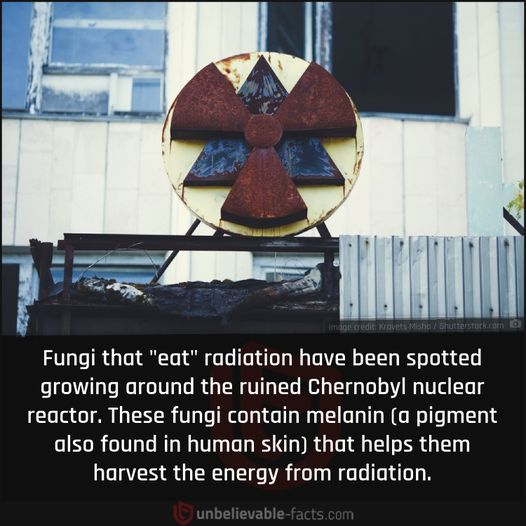#nuclear reactor
Text

Training reactor at the Budapest University of Technology and Economics, 1971.
(Fortepan)
99 notes
·
View notes
Photo
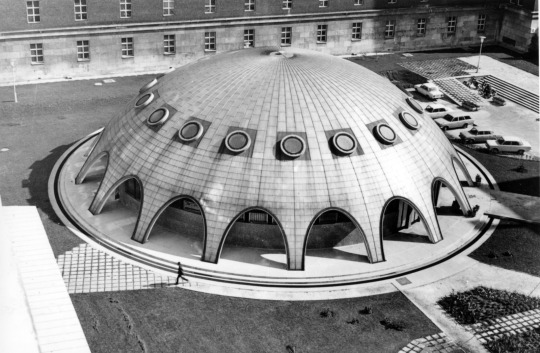
Training reactor, Budapest University of Technology, 1970. From the Budapest Municipal Photography Company archive.
242 notes
·
View notes
Text

Okay so I was reading the Wikipedia page on the Chernobyl Elephants Foot and ran into this gem. I looked into it and found that it is a true fact.
Some context for you:
The Chernobyl Elephants Foot is a big mass of Corium, concrete, and other junk that formed after the fuel rods of Reactor Four melted together into a big radioactive blob and settled in the basement below the ChNPP. Back in 1986, this thing would deliever a lethal dose of radiation in just under a minute of close proximity. The material it is mostly made of, Corium, is arguably one of the most dangerous materials on earth.
Reasearchers and scientists wanted a sample of it to figure out its true composition. They tried some conventional methods, such as a remotely controlled drill, but none of those attempts worked for various reasons. So, what do a bunch of Soviet scientists do when something just won't break? They pull out a gun.
They literally sent in a man to shoot it. They looked at this incredibly dangerous thing with the power to kill a man in under a minute, and said "Ah yes, gun."
AND IT WORKED! The AK-47 broke off a chunk of it. Theres still a mark on it from being shot as well.
TLDR: Researchers were struggling to get a sample of a very dangerous and radioactive object called the "Chernobyl Elephants Foot," so they shot it with an AK-47 using armor-piercing rounds and it worked.
(also ChNPP means Chernobyl Nuclear Power Plant)
145 notes
·
View notes
Text

Godzilla's idea of a take-out meal.
56 notes
·
View notes
Text
I was making hard boiled eggs in a nuclear reactor, later on wanting to tell my friend about it which led to me having a crisis about if I could call them hard boiled eggs or not because of the way I cooked them.
384 notes
·
View notes
Text
The first video of the Chernobyl plant after the accident. The red glow inside the reactor building is the red hot graphite inside the core of the reactor.
To learn more, check out this post.
#chernobyl#radiation#accidents and disasters#history#disaster#chernobyl hbo#reactor#nuclear reactor#nuclear disaster#helicopter#autism#aerial footage#nuclear#pilot#nuclear power#fire#soviet union#ussr (former soviet union)#ussr#ussr history#disaster footage#soviet#chernobyl disaster#chnpp#explosion#dangerous#actual footage
167 notes
·
View notes
Text

from the cherenkov radiation wikipedia page
#me#radioactive#nuclear reactor#cherenkov radiation#what are the core tags#radiation#mystical#<- pretty much
139 notes
·
View notes
Text
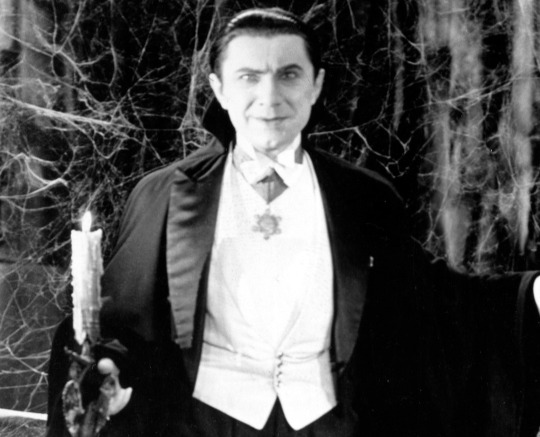

37 notes
·
View notes
Text
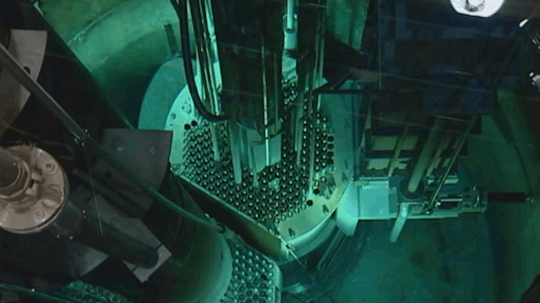
The EZ bake pulse reactor! From KPLY!
#animated gif#animated gifs#gif#gifs#pulse reactor#nuclear reactor#cherenkov radiation#radiation#blue#pretty#touch it#do it
122 notes
·
View notes
Text

Training reactor at the Budapest University of Technology and Economics, 1971.
(Fortepan)
105 notes
·
View notes
Photo

Training reactor under construction, Budapest University of Technology, 1969. From the Budapest Municipal Photography Company archive.
375 notes
·
View notes
Text
Example Submitted Post
No more kids with cancer: Clean up the Santa Susana Field Lab
youtube
Video: A Change.org-made feature video explaining the situation and the story of the organization's founder, whose daughter got cancer.
From the organizers:
"Sign to demand that California's EPA and the Dept. of Toxic Substances Control (DTSC) enforce the AOC cleanup of the Santa Susana Field Lab and prevent any more children from getting cancer...
My daughter’s childhood was stolen from her, and it haunts me to know her cancer might have been avoidable.
She, like [dozens of other] children, grew up within 20 miles the Santa Susana Field Lab, land which was developed in the 1940s to conduct rocket engine tests and secret nuclear research. In 1959 an uncontained partial meltdown of a sodium reactor caused such a devastating radiation leak that many consider it to be the worst nuclear disaster in U.S. history – and it was completely covered up for years.
Our community has up to 60% higher cancer rates, 20% higher invasive breast cancer rates, and we have the reports to prove it. It is the Department of Toxic Substance Control’s job to clean up this mess. They know our children are sick and dying, but they aren’t taking any meaningful action against those who own the land – Boeing, NASA and the Department of Energy.
The Woolsey Fire, which began on Santa Susana Field Lab, may have exposed millions of people in Southern California to the chemical and radioactive waste from the site, via ash and smoke. It proved once again that we will not be safe until the site is 100% cleaned up."
--
Info
Action Type: Petition
Source organization: Parents Against Santa Susanna Field Laboratory
Where: Southern California, specifically western Los Angeles, the San Fernando Valley, Simi Valley, Thousand Oaks, Chatsworth, and anything between those areas.
In person or virtual: Virtual. You can sign from anywhere, especially in the United States.
Time/date range: Petition started in 2017, ongoing, because Boeing is refusing to comply with the required cleanup plan they signed.
Here's the link again!
Anything else: This nuclear meltdown is the reason my grandfather died young of cancer. It's the reason 6+ members of my family are at lifelong elevated cancer risk, me included.
Everyone who has lived in this region, which includes a large area of Los Angeles, needs elevated levels of cancer screenings, especially for children, yet basically no one knows that.
(More on this here, if you're from any of the cities I listed PLEASE look into this and talk to your doctor about increased cancer screenings asap!)
#cw cancer#yes that part at the end is for real something that happened to me and my family#discovering this is actually what gave me the kick I needed to finally stop mulling and start this sideblog#submission#my grandfather died of cancer as a result of this nuclear meltdown#and it's possibly/probably the reason that my grandmother and my uncle got cancer as well#though my grandmother died of something else and my uncle is fragile but (miraculously given his form of cancer) still alive#over a decade before I was born#nuclear#anti nuclear#california#los angeles#united states#nuclear reactor#radiation#simi valley#thousand oaks#direct action#petition#ways to help#Youtube#blog business#me#submit a post
16 notes
·
View notes
Text
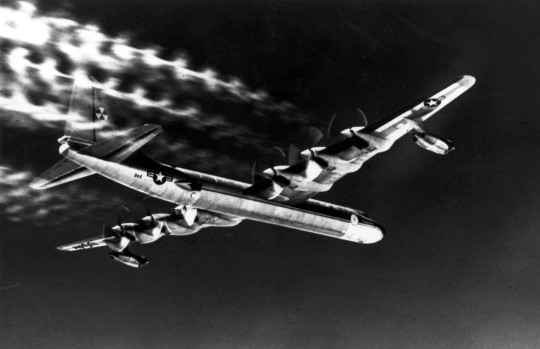
NB-36H producing contrails in flight
31 notes
·
View notes
Text


37 notes
·
View notes
Text
Principles of the RBMK Reactor

The RBMK-1000 Boiling Water Reactor is a Soviet-designed nuclear reactor capable of generating 1,000 megawatts of electricity. The core of the reactor is a short, wide cylinder. The active zone is contained inside a large metal drum, known as the core shroud. The reactor assembly is supported by a large metal disk known as the Lower Biological Shield. This sits on top of a larger metal cross labeled “Structure S”. On top of all this rests the 2,000 ton Upper Biological Shield of the reactor, known as "Structure E". The reactor sits in a large reinforced concrete shell which provides structural support and shields plant personnel from radiation.
The core region of the reactor is a large pile of graphite 14.52m × 9.7m. This pile is composed of graphite blocks 25cm by 25cm, with a height of between 20 and 60cm depending on its location in the reactor. Drilled through these blocks is a 11.4cm diameter hole, through which a zirconium alloy tube (known as a ‘technological channel’) is inserted. These contain either a fuel assembly, a control rod, or reactor monitoring equipment. These channels can be opened in situ or removed completely to replace any fuel or equipment inside them. Zirconium is used due to its high melting point and because it allows the neurons that produce the fission reaction in the core to pass through it far easier than other alloys such as stainless steel.
These metal technological channels have water pumped into them from the bottom by the Main Circulation Pumps. The entire reactor vessel is pressurized with a helium-nitrogen mixture, to prevent the oxidization of the graphite. Graphite is flammable in oxygen, but removed from it it can become quite an efficient thermodynamic conductor.
Below: A photo of RBMK technological channels at Chernobyl Unit 2. The length of these gives a good idea as to how massive the core of the RBMK is.
This picture is a screencap from this video.
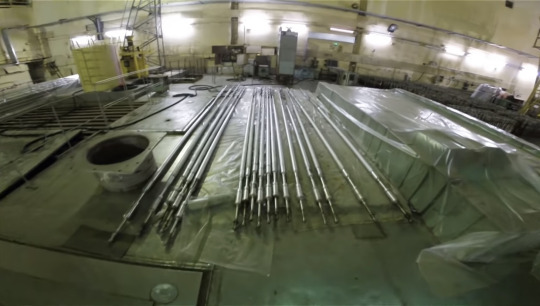
The fuel of an RBMK is small uranium oxide pellets, stacked into small metal pipes and bundled together into fuel assemblies. Uranium oxide is a ceramic material composed of Uranium 235. This element, under special conditions, can create a nuclear chain reaction which generates heat. The RBMK has three primary components that help create these special conditions to create the controlled fission reactions in the core. These are graphite, water, and boron.
Graphite is used in the core of an RBMK as a moderator. Basically, it slows down the neutrons discarded by U-236 atoms (a U 235 atom which a neutron has collided with) when they split apart. When they are released they are travelling at a tremendous speed, and have very little chance of coming into contact with another atom of uranium. Slowing them down, however, creates a higher chance of the neutrons coming into contact with an atom of U-235, creating the unstable U-236 and then pulling itself apart, thereby creating more neutrons (as well as several other elements) and sustaining a nuclear chain reaction. This sustained reaction is what creates the heat in the core of a nuclear reactor. The more neutrons there are in the core, the more reactivity (and therefore heat) is created. It should be noted that graphite is combustible at high temperatures. The core contained 1,700 tons of graphite.
Water in the core of an RBMK serves as a coolant. Because the core of a nuclear reactor gets extremely hot, it becomes necessary to cool its components if you wish to avoid destructive melting within the core region. Water is the most common coolant in nuclear reactors, as it is cheap and abundant. The water is pumped in under high pressure at about 265 C by the Main Circulation Pumps from the bottom of the reactor up into the technological channels containing the fuel and other components of the reactor. After passing through the channels and heating up to about 284 C, the water is piped out of the top of the reactor. Some of the coolant water heats up so much that it forms into steam bubbles inside the reactor. When the water is pumped out of the core it is then sent into four steam separator drums, where the steam is separated from the water. The water is then pumped back into the reactor, while the steam is sent to the turbine generators of the plant to create electricity. After this, the steam is condensed back into water using cool water from the plant cooling pond and recirculated into the cooling system.
Below: A model showing the circulation system of an RBMK-1000 reactor. Coolant water is in blue and hot water/steam is in red. The yellow structures are the main cooling pumps, and the green structures are steam turbines. This model is spatially to scale, essentially what you would see if you removed every part of the reactor except for the coolant circuit.
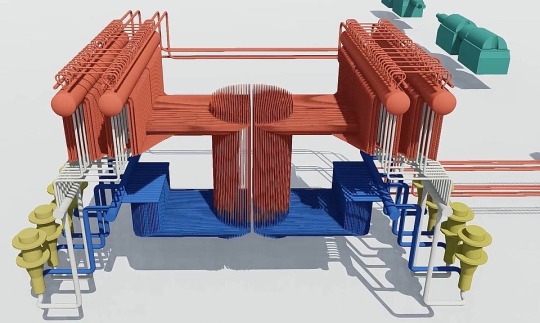
Some of the channels in the RBMK contain control rods (large boron carbide rods) that move up and down in the channel as necessary to keep the reactor within operational limits. Boron is a neutron sponge. It absorbs neutrons and can effectively eliminate a chain reaction. It functions as the brakes on a human made nuclear reaction, useful both in making sure a chain reaction does not become a runaway criticality and also in being the off switch on a nuclear reactor. The RBMK has 211 of these control rods, some of which are under operator control and some of which are under the control of a computer. A design quirk of the RBMK is that at the end of each standard control rod was a 14ft 9in graphite displacer. When a control rod was withdrawn out of the core it left behind a space that would be filled with water, a neutron absorber. Since more water in the core would kill reactivity, the designers of the reactor hung this displacer from the control rods to replace the space left by the control rod with something that would increase reactivity rather than kill it. This was a sound design choice, but it was a major factor in the events of the accident at Chernobyl.
Below: An illustration of the control rod displacers in an RBMK.
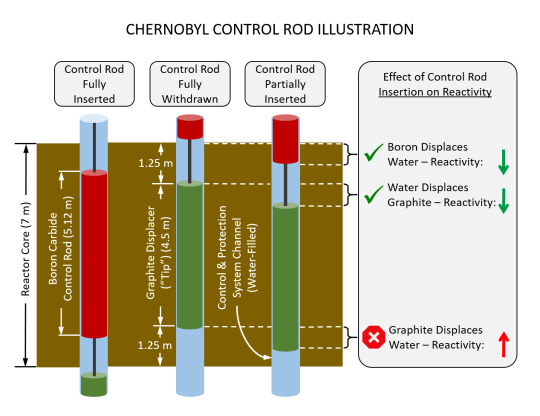
Below: A top down view of the channels of an RBMK. You can see the layout of the control rods (green), neutron detectors (blue), shortened control rods inserted from below the reactor (yellow), automatic control rods (red), and the fuel channels (grey). The number on the green, yellow, and red squares are the last recorded insertion depths of control rods in Chernobyl Unit 4 1m 30s before the explosion. Only one is fully inserted.
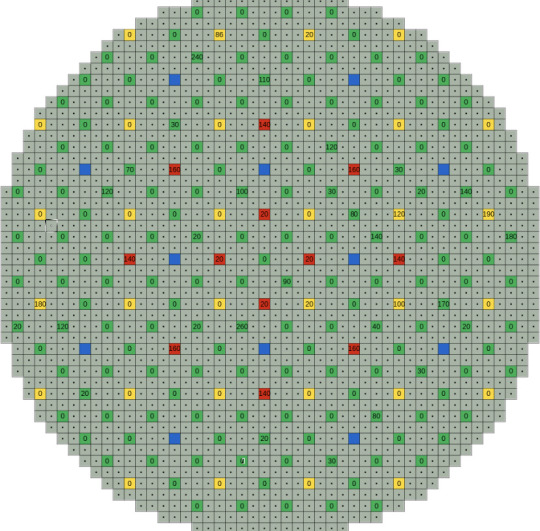
Below: A cutaway of the RBMK system layout.
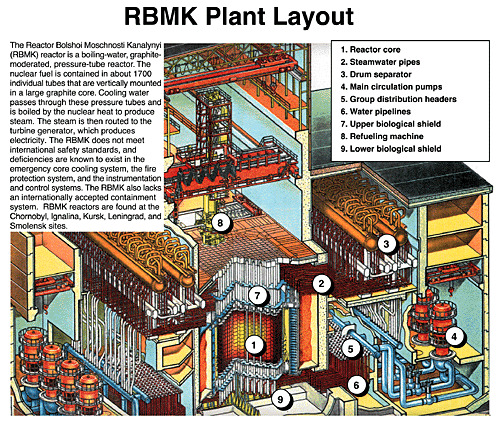
Two additional factors also come into play regarding the water. Water is naturally a neutron absorber, albeit a far less effective one than boron. The more water in the core, the less neutrons are present and therefore the lower the reactivity. However, when transformed into steam, water loses nearly all of its neutron absorbing properties. The more steam in the core, the higher reactivity is. This is called a ‘positive void coefficient’, and it was a known quirk of the RBMK and indeed several other reactor designs. However, the RBMK had a much higher level of this effect in its core due to its design. This is important to the accident sequence.
It is also important to note that the RBMK is an enormous construction. It is temperamental, unstable unless operating at full power, and requires constant monitoring and guidance from its operators. It requires three operators just to run it normally, and it was notoriously difficult to operate. The core region is so large that the equipment used to monitor it could not accurately read a large portion of it, and hotspots of reactivity would often form resulting in alarming and unexplained jumps in power output and temperature. While in theory not a bad design, the RBMK was a deeply flawed machine.
An enormous thank you is owed to @nicotinebeige , who was extremely helpful in the creation of this post. If you like film photography, you should check out their blog!
This is a technical explanation of the RBMK design. For a history of the RBMK, check out this post. Apologies for any mistakes! I’m most definitely not an expert on nuclear physics, and if anything is unclear you should absolutely check out other sources for more info. As always, thank you for your interest!
#chernobyl#nuclear reactor#history#radiation#accidents and disasters#nuclear power#autism#nuclear#reactor#chnpp#rbmk#rbmk 1000
118 notes
·
View notes
